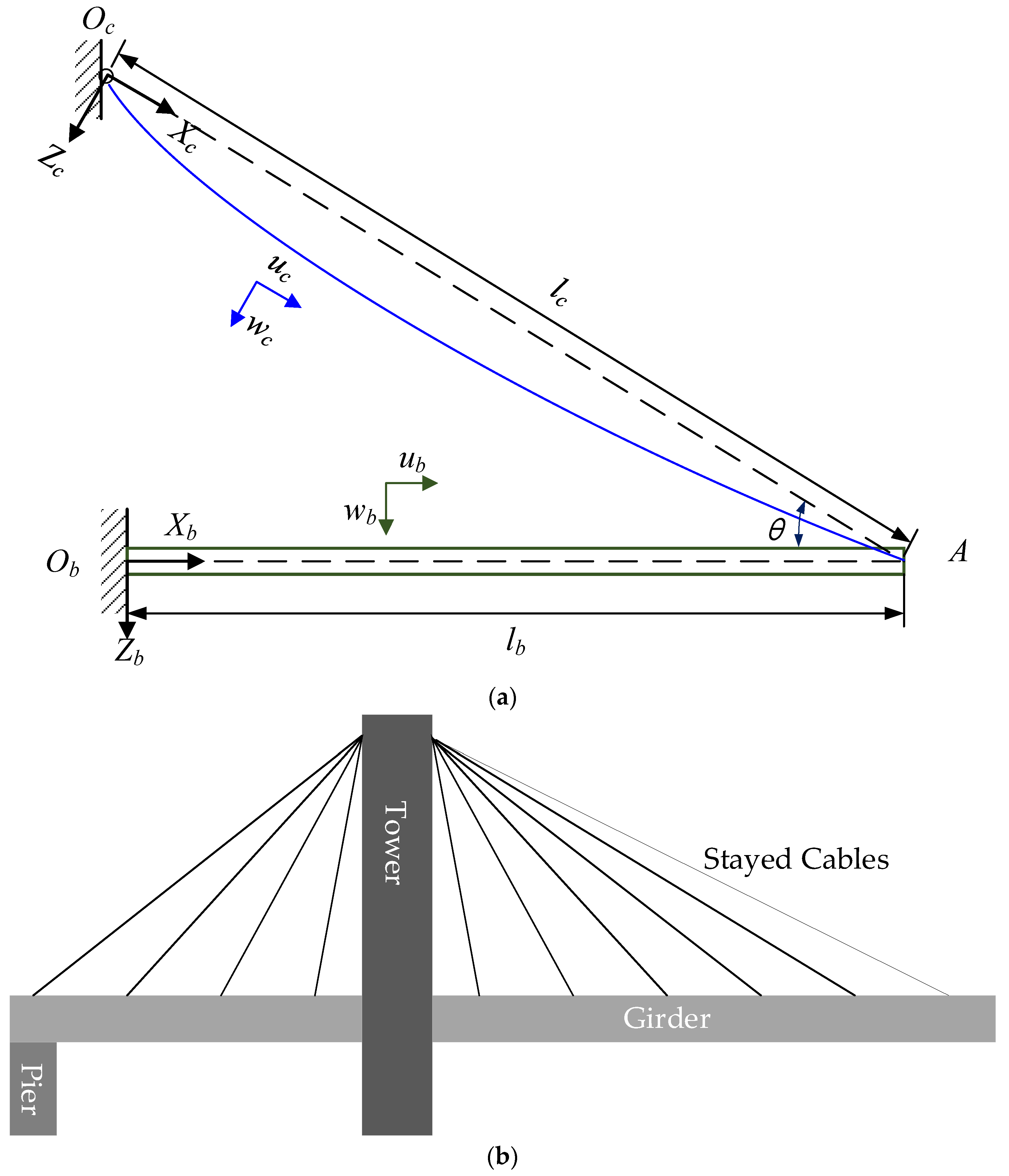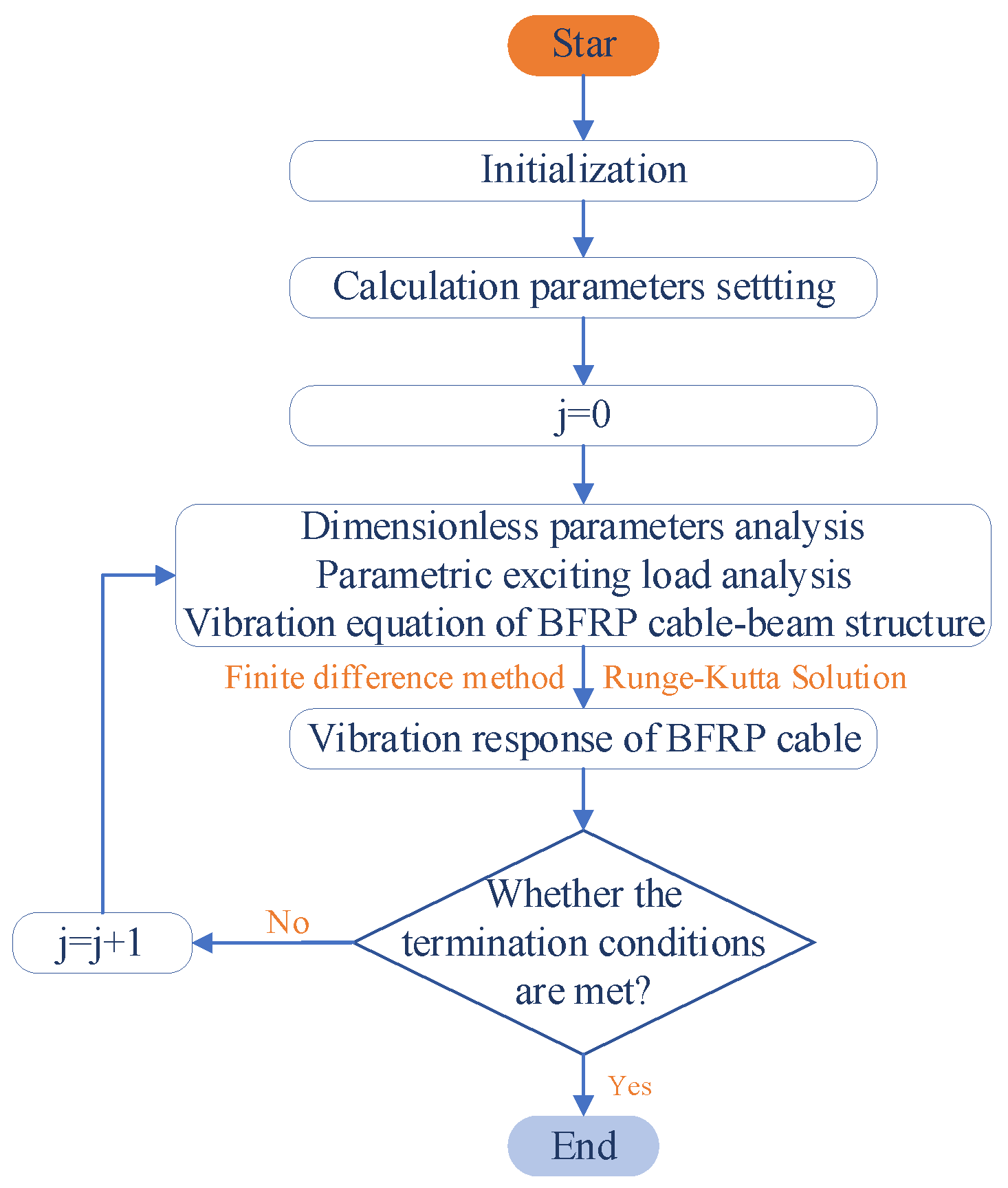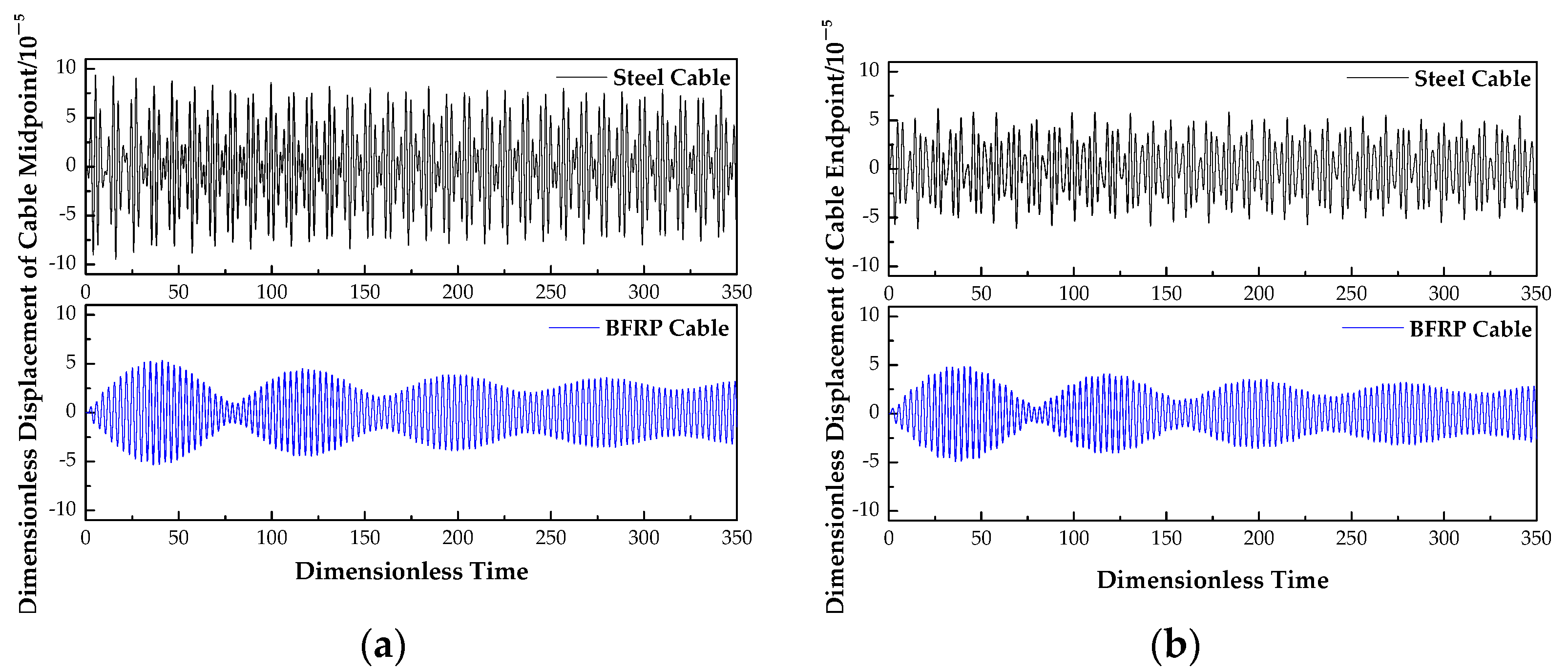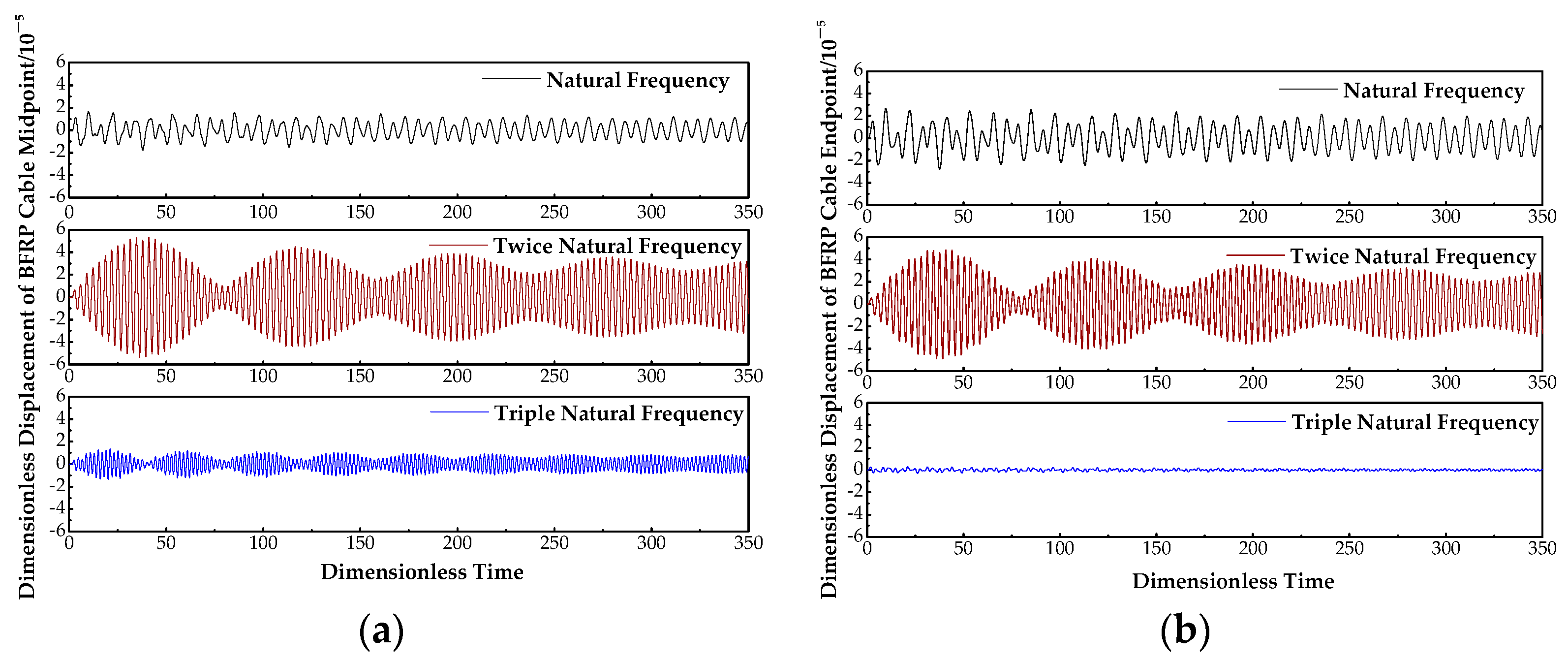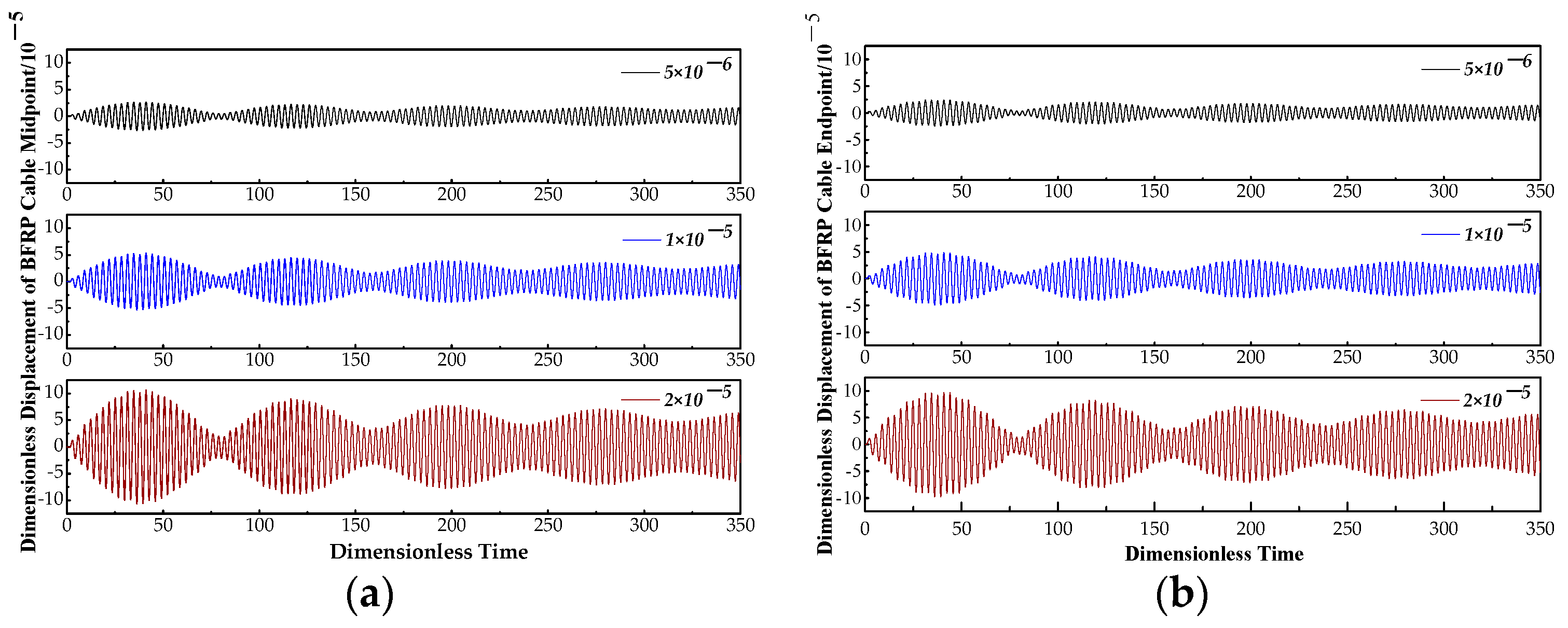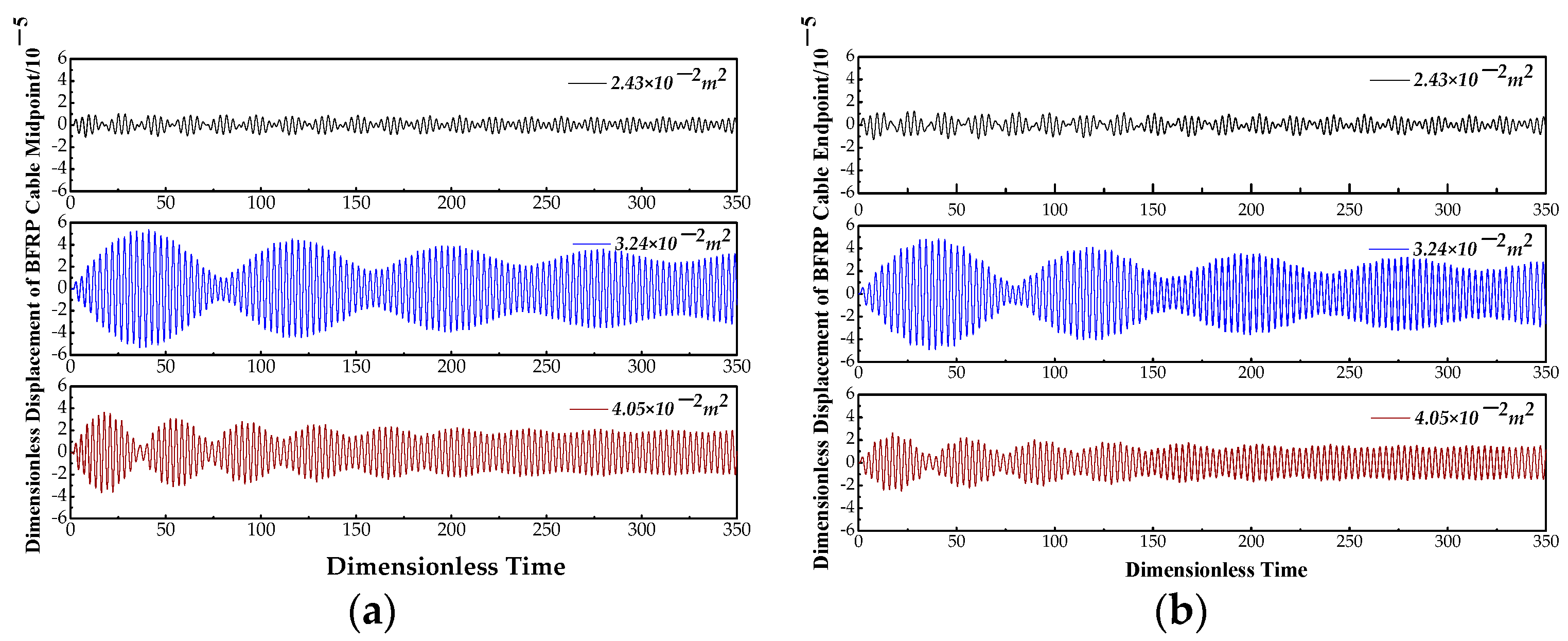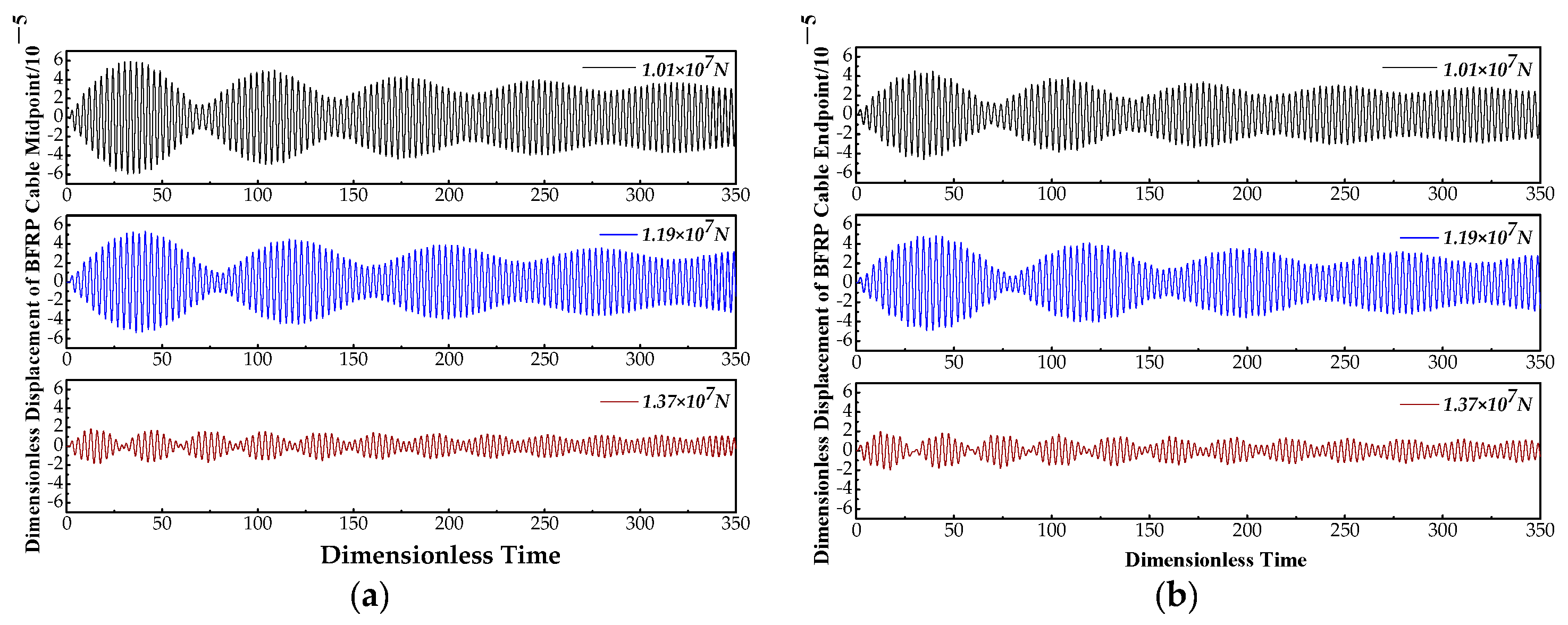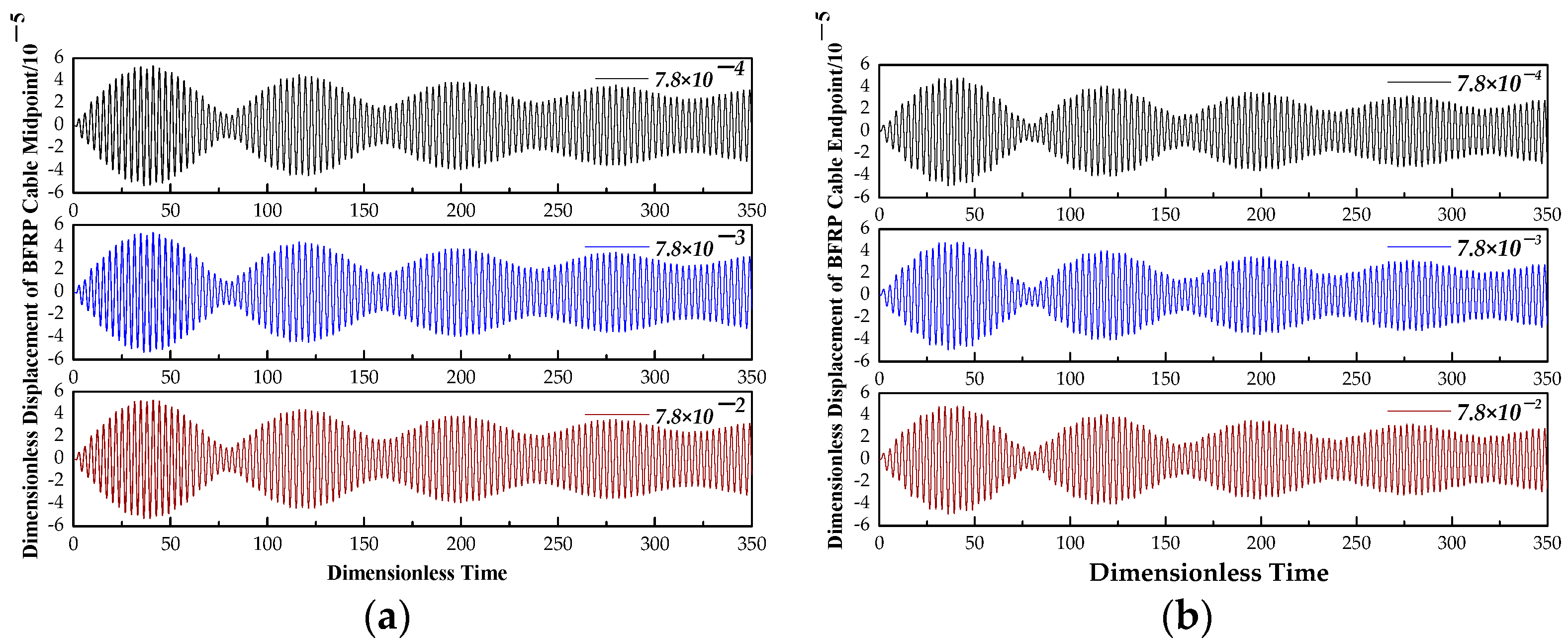With the increase in the span capacity of cable-stayed bridges, the disadvantages of traditional steel cables, including large self-weight, pronounced sag effect, and low carrying efficiency, have become more serious [
1]. Due to the limitation of construction technology and economic performance, a main span of 1300 m has become the bottleneck of the long-span cable-stayed bridge [
2]. In addition, the severe air pollution and increasing traffic load have aggravated the fatigue degradation and corrosion damage of the traditional steel cable, which cannot meet the requirements of the long-span cable-stayed bridge for long spans, long life, and high durability. It is necessary to develop a new material cable with superior mechanical and chemical properties and economic performance to apply on the long-span cable-stayed bridge to overcome the challenges in span and durability of bridge engineering [
3]. Fiber-reinforced polymer (FRP for short) materials have been widely used in repairing existing structures and reinforcing new structures due to their high strength-to-weight ratio, good anti-fatigue properties, and superior corrosion resistance during the past 30 years [
4]. Manufacturing stayed cables with FRP materials can not only take full advantage of FRP materials such as high strength and lightweight qualities, good fatigue resistance, and superior anti-corrosion properties, but it also avoids the FRP material shortcomings of poor shearing performance. Therefore, the application of FRP cable on long-span cable-stayed bridges can increase span and service life significantly, which will provide an effective way to improve the short- and long-term performance of long-span cable-stayed bridges. Due to the superior mechanical and chemical properties, carbon fiber-reinforced polymer (CFRP for short) material has become the first choice for making FRP cables for long-span cable-stayed bridges [
5]. However, the high cost and significant wind sensitivity of CFRP cable restrict its application on long-span cable-stayed bridges. Taking mechanical properties and economic performance into consideration, the feasibility of the other FRP materials used to manufacture FRP cables has been studied. Compared with the other FRP materials, basalt fiber-reinforced polymer (BFRP for short) has shown its mechanical and economic advantages, such as high strength, significant elongation, good fatigue resistance, superior anti-corrosion property, good chemical stability, and low cost [
6]. With no emissions of harmful gases during manufacture, the BFRP cable has been regarded as one of the green inorganic fiber materials. With its outstanding advantages, theoretical and experimental studies on the mechanical behavior and structural performance of BFRP cables on long-span cable-stayed bridges have been carried out [
7]. According to the existing studies [
8], anchorage of BFRP cables with multiple tendons and large tonnage can be achieved using the anchorage method with a continuous fiber-reinforced load transfer component. Applying BFRP cable on long-span cable-stayed bridges can not only meet the requirement of bridge structure design but also reduce the axial force of the girder. In addition, BFRP cables can help to suppress the significant amplitude vibration of cables and optimize the economic performance of long-span cable-stayed bridges [
9]. With the improvement in manufacturing and the accumulation of engineering experience, BFRP cables have broad prospects of application on long-span cable-stayed bridges.
With a quarter of the weight per unit length of the traditional steel cable, the BFRP cable is more sensitive to external excitation [
10]. Under the same load excitation, the amplitude of vibration acceleration will be significantly larger than that of the steel cable [
11], which shows the high sensitivity of the FRP cable under external excitation. According to existing studies [
12,
13], the large-amplitude vibration of the stayed cable will be induced under parametric excitation, whose excitation frequency is twice the natural frequency of the stayed cable. However, the results of the analysis for the stayed cable do not agree with the actual vibration behavior on long-span cable-stayed bridges due to the overlooking of the coupled vibration interaction between the cable and the deck of the long-span cable-stayed bridge. It is necessary to analyze the parametric vibration behavior of the FRP cable on a long-span cable-stayed bridge considering the coupled vibration interaction. For the cable-stayed bridges, masts, and suspended roofs, the cable-stayed beam model has been widely adopted in coupled vibration analysis. Through a mass block [
14], simply supported beam [
15], or cantilever beam [
16] simulating the bridge deck, reduced cable–beam models were employed to study the nonlinear coupled behavior of the stayed cable on a long-span cable-stayed bridge. Based on the cable-stayed beam model, the coupled vibration responses were constructed with their vibration characteristics, influence factors, and the coupling effects on the cable. With the reduced cable–beam model (cable–mass block model), Guo [
17,
18] investigated the cable’s forced nonlinear vibration that was excited by beam oscillation and numerically analyzed the influence of the deck/cable mass ratio, cable inclination, boundary damping, and internal detuning on the nonlinear vibration responses. According to the cable–simple support beam model, Kang [
19] and Cong [
20] explored the spatial dynamic theory and analyzed the multimodal interaction of the system, which deduced a wealth of behavior from the results, including the saddle-node bifurcation, Hopf bifurcation, and veering phenomenon. Based on the cable–cantilever beam, Cong [
21] clarified that the cable experienced a more significant response than the beam, whether excitations were applied to the beam or the cable. In addition, Mohammad [
22] discussed the effect of bending stiffness and sag of the cable on the system dynamics through theoretical analysis and vibration experiments. With regard to the numerical simulation methods for reproducing the nonlinear behavior of cable elements, there are various numerical strategies such as the multi-truss element approach and the catenary element model. Using the multi-truss element approach, Lonetti [
23] proposed a numerical model for predicting the structural integrity of a self-anchored cable-stayed suspension bridge considering both geometric and material nonlinearities. With the catenary element model, Zhou [
24] numerically assessed the load effects on the prototype of a long-span cable-stayed bridge and revealed that the design live load from AASHTO may be unsafe for use as the live load. Although phase achievements in the nonlinear vibration behavior of the cable–beam composite structure have been made, the coupled effect between the stayed cable and the beam has not been taken into full consideration, resulting in an inaccurate description of the parametric vibration behavior of the stayed cables. Meanwhile, the existing studies of parametric vibration cannot be directly applied to BFRP cables due to the changing conditions of nonlinear vibration and the complex mechanism of damping the dissipation energy of BFRP cables. It is necessary to establish the nonlinear coupling vibration model of the BFRP cable–beam composite structure to study the nonlinear vibration behaviors of BFRP cables on the long-span cable-stayed bridges under parametric excitation. Taking the nonlinear factors of BFRP cables and coupling effects between the stayed cable and beam into consideration, this paper proposed the nonlinear coupled vibration model. It carried out the theoretical and numerical studies of BFRP cables on the long-span cable-stayed bridges under parametric excitation. To better understand the nonlinear parametric vibration of BFRP cables, the key influencing factors of the nonlinear vibration behavior of BFRP cables on long-span cable-stayed bridges under parametric excitation have been discussed in this paper.
